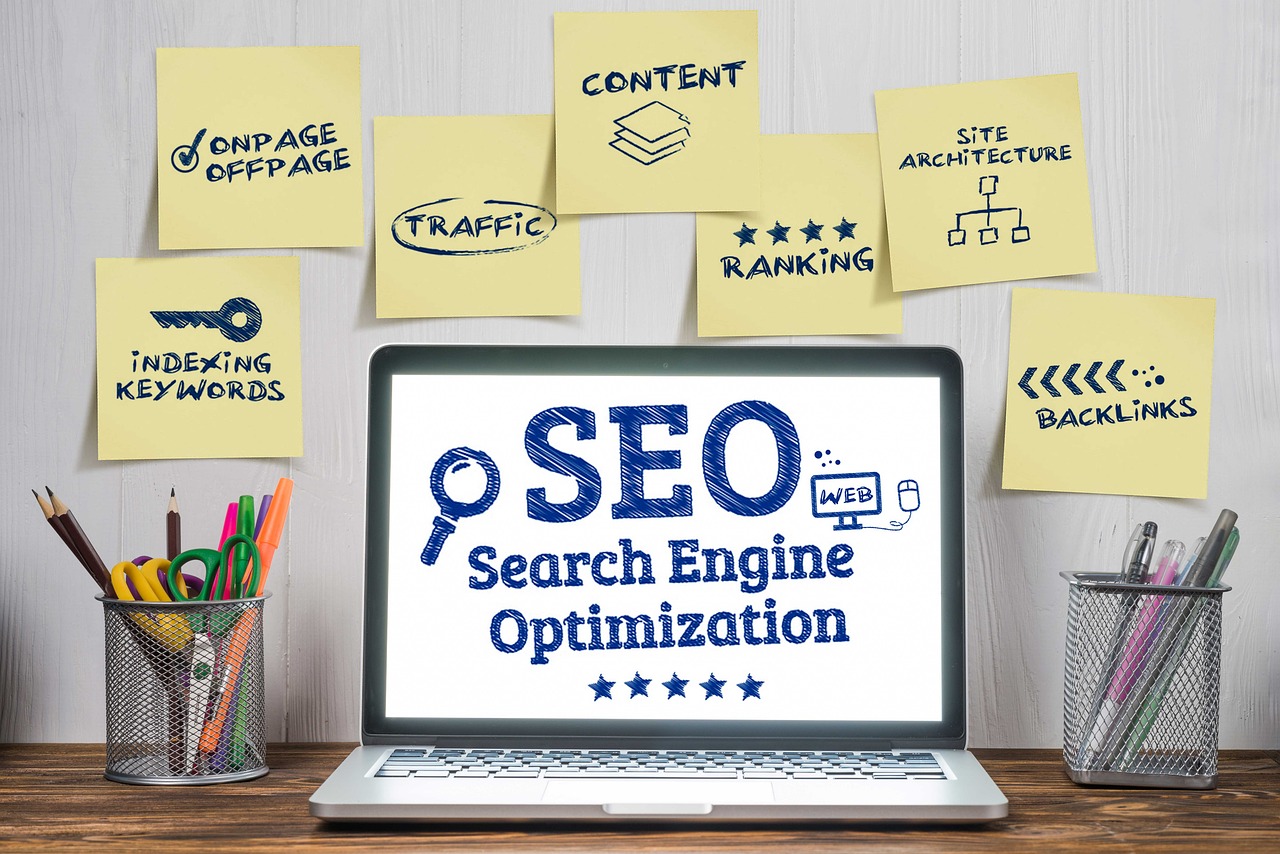Business
Effective SEO Strategy Setup for Online Brands

Everyone struggles with questions like “Should I first address page titles?”, “Should I implement a site map?” or “Should I write meta descriptions first or optimize page URLs?” while creating a strategy for their online business. Creating an effective strategy can be both art and science in equal measure. If you want your business to show up anywhere near the search results on Google, attract more organic traffic, and increase ROI, you need to take a solid, multi-faceted approach to SEO. Use the checklist, tips, and templates highlighted below to kickstart your SEO content strategy.
Map your business goals
Everything you do, from your SEO strategy to your content, should revolve around your goals. Your business goals should be both realistic and measurable. Include your goals in your analytics and tracking systems. The most common goals while formulating an SEO strategy are-
- Increased conversion rates by X%.
- Higher organic traffic.
- Higher ranking for targeted keywords and phrases.
- Stronger domain authority.
- Improved backlink profile.
- A higher number of “featured snippets” and “People Also Ask answer boxes.”
- Greater average time on site.
- Boosted user engagement.
Involve multiple departments in narrowing down SEO-related goals particularly the individuals in charge of your email marketing, PR, and social media.
Formulate a strategy
The word strategy can have different meanings to different marketers. From a narrowed-down perspective, you can have a strategy behind specific content and the eventual SEO outcome that it is tied to. From a broader perspective, your SEO game plan should include several web pages, your website, and other content as a part of your SEO strategy.
In its essence, an SEO strategy is far from a list of to-dos. It’s a well-informed roadmap crafted based on assumptions and big-picture goals that gradually evolve. SEO should align with the brand’s marketing, set the right tone, and be able to convert the highly-targeted audience.
B2B business strategies would be different from SEO strategies of customer-facing businesses. Over time, cleverly incorporating SEO into your digital marketing material would rank your business on the first page of search engines for the topics and questions your target audience is asking.
Create high-quality content
Curating the perfect SEO strategy is one thing and creating high-quality content is another. Here’s a checklist that you can use to make sure whatever content you create ranks high in the search engines.
1. Make use of headings and subheadings in your content pieces.
2. Break down complex ideas with bulleted points because remember online audience scans instead of reading.
3. Create eye-catching thumbnails for your videos using a professional video editor or a video app for Android because it can make or break your video efforts.
4. Make sure the first 15 seconds of your videos are powerful.
5. Check the readability score and make sure it matches the readability score of your target audience.
6. Make sure all your images are SEO optimized by adding your target keyword to the file name and alt text. While you are at it, reduce the size of images, so it loads faster.
7. Create SEO-optimized URL.
8. Create a backlink to external websites that hold authority in your subject matter. Make sure the website you link to isn’t associated with your competitors.
9. Try to insert internal links in at least two places throughout the content. Links to other pages on your blog or website are also allowed.
10. Avoid over-stuffing keywords.
11. Always conclude with a call to action. Even a million user traffic will be worthless if you can’t move them down to the path of conversion.
12. Write effective social media captions and market them heavily.
Research your target audience
Based on current website shoppers, social media followers, and website users, most brands should already know who their target audience is. In these scenarios, it is a great idea to create profiles to gain a more behavioral understanding of who they are trying to reach.
While creating buyer personas, try to figure out what they care about, how they reached your website, what they are searching for on your website, their end goal, and what type of content they most likely resonate with.
Once you lock in on your “ideal” target audience, shift through industry trends, relevant news websites, and competitors to see what’s happening in the space. You may get a whole of information just by researching what’s being discussed and what’s out there already. You may better position your SEO campaign with the aid of this information.
Along with the content types your target buyer prefers, try to understand the tonality and language used across the content pieces they are engaging with. This includes the voicing used in images, graphics, and videos and not just written content. Find answers to questions like those interested in research-based, info-dense blogs and articles, or are they leaning towards short, eye-catching videos that quickly explain niche concepts?
If you are struggling with the research part, you can use the Google search engine to understand what keywords they are searching for. An easy place to start is Google’s autocompleting feature. Just enter your keyword and see how it completes the phrase. The phrases that show up are the exact questions people are looking for answers to.
After autocomplete, the second step would be to analyze the first page of the search results when you enter your niche keyword. If there are too many paid ads on the top, it shows that your keyword has a very competitive search landscape. In less competitive spaces, you would see more organic search results that provide information, ideas, and other forms of value-added content.
Next, understand which angle your competitors are taking with their content. This way, you can aim for the gaps missing from their content. If you include details that they are missing, it will help differentiate your content from the rest and outrank the competition because it goes above and beyond what the top results have shared. What matters at the end of the day is quality original content. So push towards creating content that’s better than the top search results. As attention spans are minimized, videos get high rankings, too, in the face of lengthy blogs. Create and edit videos online in high quality using an easy-to-use, feature-rich cloud-based video editor and allow your video content to complement your existing blogs.
Effective SEO strategy – Looking into the future
With the above-given steps, you can create and sustain an effective SEO strategy that helps you achieve your digital marketing goals. Remember to constantly measure your KPIs to track your goals and make amends as needed. Your content strategy should focus on all content formats, including blogs, social media, press releases, and videos.
Business
How to Apply Machine Stretch Film

comprehensive guide
Machine stretch film is designed for automated packaging systems, where efficiency, consistency, and load security are essential. Properly applying machine stretch film to pallets or products is critical to ensure product integrity during transport and storage. The process requires both the right machine setup and knowledge of the film’s properties to achieve the best results. Machine stretch film is typically manufactured by leading producers such as PWP Stretch Film, who provide high-quality films tailored to meet the specific needs of automated packaging. Below is a comprehensive guide to applying machine stretch film effectively, covering key considerations for setup, application, and optimization.
Set Up the Stretch Wrapping Machine
- Check Film Compatibility: Before applying any type of stretch film, ensure the film type is compatible with your wrapping machine. Machine stretch film is generally designed for automated systems, while hand stretch film is typically used for manual wrapping applications.. Different machines may have specific requirements for the type of stretch film used, such as width, gauge, and roll core size. Ensure that the film roll is correctly loaded onto the machine, and that the film is positioned for smooth application.
- Adjust Machine Settings: One of the most crucial steps in applying machine stretch film is to adjust the machine’s settings. This includes controlling:
- Tension: The tension should be adjusted based on the type of film and the load being wrapped. Too much tension can cause the film to snap, while too little can result in weak wraps. Most stretch wrapping machines allow you to adjust the tension to achieve optimal stretch and load security.
- Pre-Stretch: Some machines come with pre-stretch capability, which allows the film to be stretched before it’s applied to the load. This helps to save material while still providing strong load containment. Adjust the pre-stretch settings according to the desired stretch ratio (e.g., 200%, 250%).
- Wrap Speed: Depending on your production environment and volume, adjust the wrap speed. Faster wrapping speeds improve throughput but may lead to uneven wraps, while slower speeds offer better precision but can decrease productivity.
Properly Load the Pallet or Product
- Evenly Distribute the Load: Ensure the products or materials on the pallet are evenly distributed. An uneven load can cause instability during wrapping, leading to poor film application. It’s important that the pallet is properly centered on the wrapping machine for consistent and even wraps.
- Ensure Stability: Check that the load is stable and properly aligned. Any shifting or tilting can result in gaps or tears in the film during the wrapping process. Some machines have adjustable features that help secure the load during the wrapping cycle.
Wrapping the Pallet
- Start from the Base: Begin the wrapping process at the base of the pallet and work your way up. This helps secure the bottom of the load first, ensuring stability. Many machines automatically start wrapping from the bottom and move upward, while others allow manual adjustment.
- Overlapping Layers: As the film is applied, make sure there is an adequate overlap between each layer. The amount of overlap will depend on the machine settings and the stretch film gauge. A typical overlap is around 50-70% of the film’s width. This ensures the film adheres securely to the load and provides greater stability during transport.
- Maintain Consistent Tension: While wrapping, it’s important to keep the film under consistent tension. The film should be applied with just enough stretch to secure the load, but not so much that it tears. Adjust the tension controls on the machine to maintain consistency across all layers.
- Top Layer and Edge Sealing: Once the pallet is wrapped, the top layer should be applied to seal the load and prevent the film from unrolling. Many stretch wrapping machines have the ability to automatically cut and seal the film at the top to secure the end of the wrap. Make sure that the edges are sealed tightly to prevent the film from loosening during transport.
Optimize Film Usage
- Use the Right Film Gauge: Choosing the right thickness or gauge of film is essential for efficient and cost-effective wrapping. Thicker films offer greater puncture resistance and load stability, but they are also more expensive. Lighter gauges are more cost-effective but may not provide the same level of strength. Selecting the right film gauge for your specific load type and weight helps minimize material waste and optimize performance.
- Adjust Pre-Stretch for Material Efficiency: Pre-stretching the film can significantly reduce material waste. By stretching the film before it is applied, you use less material while still achieving the same load security. Adjust the machine’s pre-stretch setting to find the optimal stretch ratio that works for your products.
- Monitor Film Waste: Monitor the amount of stretch film being used per unit and adjust the machine settings if necessary. Excessive use of film can be a sign of improper tension, incorrect pre-stretch, or poor machine calibration. Regularly check for any inconsistencies or waste in the wrapping process.
Safety Considerations
- Operator Safety: Machine stretch film application involves high-speed machinery, and safety is critical. Ensure that operators are trained in the safe operation of the stretch wrapping machine, including proper loading techniques, adjusting settings, and handling any issues that may arise during the wrapping process.
- Machine Safety Features: Many modern wrapping machines come with built-in safety features, such as emergency stop buttons, automatic film cutting, and sensors to prevent injury. Ensure that these features are in place and functioning properly.
- Personal Protective Equipment (PPE): Operators should wear appropriate PPE, including gloves and safety shoes, to protect against sharp edges and other hazards associated with handling stretch film and operating heavy machinery.
Maintenance of the Stretch Wrapping Machine
- Regular Cleaning: Dust, debris, and spilled film can accumulate on the machine and affect its performance. Regular cleaning of the machine ensures that it operates smoothly and reduces the risk of film jamming or uneven application. Pay special attention to rollers, film dispensers, and sensors.
- Routine Inspections: Periodically inspect the stretch wrapping machine for wear and tear, particularly on parts that interact with the film, like rollers and tensioners. Ensure that the machine is working correctly, especially when using more specialized films like VCI stretch film, which require careful handling to preserve its protective properties.
- Film Roll Replacement: Monitor the usage of film rolls and replace them when necessary. If the machine starts to struggle with applying the film correctly or if the film becomes damaged, it may be time to load a new roll. Ensure that the film is properly threaded and positioned before starting a new wrapping cycle.
Business
Retaliation in the Workplace: Identifying and Addressing Employer Misconduct

Retaliation in the workplace is a serious concern that can affect anyone. Understanding what constitutes employer misconduct is key to addressing it effectively. Retaliation occurs when an employer punishes an employee for engaging in a legally protected activity. These activities might include reporting harassment or discrimination, participating in an investigation, or refusing to engage in illegal actions. Recognizing retaliation involves spotting subtle signs like unjustified negative performance reviews, denial of promotions, or exclusion from important meetings. It’s important to address these issues promptly. Speaking up can seem daunting, but it protects your rights and promotes a healthier work environment. Legal experts, such as Sattiraju & Tharney, LLP, can provide guidance on navigating these complex situations. Many employees fear retaliation for voicing concerns, but understanding your rights can empower you. Remember, every step taken towards identifying and addressing employer misconduct contributes to a fairer workplace for all.
Understanding Employer Retaliation
Employer retaliation can manifest in various forms. It is crucial to differentiate between normal managerial actions and retaliatory behaviors. Retaliation might include:
- Sudden changes in job responsibilities
- Increased scrutiny or micromanagement
- Unwarranted disciplinary actions
These actions can create a hostile work environment, affecting morale and productivity. According to the U.S. Equal Employment Opportunity Commission, retaliation claims have consistently been the most frequently filed charges in recent years. This underscores the need for awareness and proactive measures.
Identifying Signs of Retaliation
Spotting retaliation requires vigilance. Employees should note any unusual changes in their work situation, especially following complaints or whistleblower activities. Key indicators include:
- Isolation from colleagues or team activities
- Unanticipated job transfers to less desirable positions
- Reduction in work hours or responsibilities
When these signs appear, it’s important to document everything. Keeping a detailed record of incidents, dates, and conversations can be crucial in building a case against retaliation.
Legal Protections Against Retaliation
Employees have legal protection under various laws. The Occupational Safety and Health Administration (OSHA) protects workers who report safety violations. Additionally, Title VII of the Civil Rights Act and the Americans with Disabilities Act include provisions against workplace retaliation.
These laws aim to ensure a safe reporting environment. Employees should familiarize themselves with these protections to better understand their rights and options.
Steps to Address Retaliation
If you suspect retaliation, taking the right steps is crucial. Here’s a simple approach:
- Document every instance meticulously. This includes keeping emails, memos, and any evidence of retaliatory behavior.
- Communicate concerns to a supervisor or HR. Sometimes, an open conversation can resolve misunderstandings or miscommunications.
- Seek legal advice if necessary. Lawyers specializing in employment law can provide insights and help you navigate the complexities of retaliation claims.
Comparison of Common Retaliation Examples
| Retaliation Example | Description | Impact |
| Negative Performance Review | Unjustly low performance ratings following a complaint | Can affect promotions and salary increments |
| Demotion or Pay Cut | Reduction in job position or salary without valid reason | Financial impact and job dissatisfaction |
| Exclusion from Meetings | Omitting an employee from important meetings | Leads to missed opportunities and isolation |
Conclusion
Addressing workplace retaliation is not only about protecting individual rights but also cultivating a culture of fairness. Awareness and education are the first steps in prevention. Encouraging open dialogue and understanding legal protections can help employees feel safe and valued. Taking action against misconduct helps foster a workplace where everyone has the opportunity to thrive without fear. By staying informed and proactive, we can all contribute to a more equitable work environment.
Business
The Importance of Timely Action in Post-Judgment Collections

In the world of post-judgment collections, timely action is crucial. Once a judgment is obtained, the window for effective recovery begins to close. Delays can lead to diminished returns and increased complications. Taking swift steps ensures the judgment remains enforceable and maximizes the chances of full collection. Warner & Scheuerman, known for their expertise in this area, highlight the significance of acting without hesitation. They emphasize that the faster you act, the better the outcome. Timing impacts the ease of locating debtor assets and navigating the legal maze. By acting promptly, one can avoid unnecessary hurdles and expenses. Furthermore, understanding the complexities of the collection process can make a significant difference. It’s about knowing when and how to pursue the next steps, ensuring that each move is strategic and informed. Timely action doesn’t just lead to better results. It also provides peace of mind in an otherwise stressful situation.
Understanding Post-Judgment Collections
When a court issues a judgment, it’s a legal recognition that one party owes money to another. However, obtaining a judgment doesn’t automatically lead to payment. The real work begins with locating assets and enforcing the court’s decision. Several methods exist to aid collection, including wage garnishments, property liens, and bank levies. Each method requires understanding and expertise to execute effectively.
Why Timing Matters
Timely action impacts the recovery process in several ways:
- Preservation of Assets: Debtors may attempt to hide or transfer assets if given time.
- Legal Deadlines: Many jurisdictions impose time limits on enforcement actions. Missing these can nullify a judgment.
- Interest Accumulation: While judgments accrue interest, the longer collection takes, the less valuable the judgment becomes due to inflation and potential asset depletion.
Many experts, including those at the Department of Justice, stress the importance of not delaying enforcement actions. They provide guidelines on the legal methods available to those seeking to enforce judgments.
Strategies for Effective Post-Judgment Collection
To enhance the chances of successful recovery, it’s essential to employ strategic methods:
- Asset Investigation: Identifying the debtor’s assets is the foundation of collection.
- Legal Remedies: Use all available legal tools, from liens to garnishments, to encourage payment.
- Professional Assistance: Engaging with professionals who specialize in collections can provide advantages not readily available to individuals.
Comparing Collection Methods
The following table outlines common methods of post-judgment collection along with their benefits and potential drawbacks:
| Method | Benefits | Drawbacks |
| Wage Garnishment | Steady payment stream | Limited to a percentage of wages |
| Property Lien | Secures debt against real estate | Requires sale of property for payment |
| Bank Levy | Directly accesses debtor’s funds | One-time access; may not cover full debt |
Historical Example: Swift Action in Collections
In ancient Rome, creditors employed swift action to recover debts, often working with local magistrates to seize assets immediately. This historical precedent demonstrates the value societies have long placed on timely debt recovery. The quicker the response, the more likely a creditor would obtain due payment.
Conclusion
Timely action in post-judgment collections is not just advisable; it is essential. Acting quickly preserves legal rights and increases the likelihood of recovering owed sums. By understanding the collection process, employing strategic methods, and using historical insights, parties can enhance their recovery efforts. For more information, resources such as the Federal Reserve’s guide on money and payments provide additional insights into handling finances effectively.
-

 Home Improvement6 months ago
Home Improvement6 months agoEssential Drain Cleaning Tips for Brampton Residents
-

 Fashion11 months ago
Fashion11 months agoAttractive Beach Dresses: Elevate Your Look with These Ideas
-

 Entertainment10 months ago
Entertainment10 months agoNetnaija: Your One-Stop Shop for Free Movies in Africa
-

 Pets10 months ago
Pets10 months agoPawsitively Perfect: The Types of Dog Harness Bundle for Your Furry Friend
-

 News10 months ago
News10 months agoWhat Are the Biggest Challenges in Marine Construction Projects in Australia?
-

 Health11 months ago
Health11 months agoUnderstanding Ftmç: Gender-Affirming Surgery
-

 Business11 months ago
Business11 months agoHow Professional Concrete Cleaning Wins Repeat Business
-

 Entertainment12 months ago
Entertainment12 months agoUnlocking Cinematic Pleasures: A Comprehensive Look at Rebahin, the Free Movie Streaming Haven
















